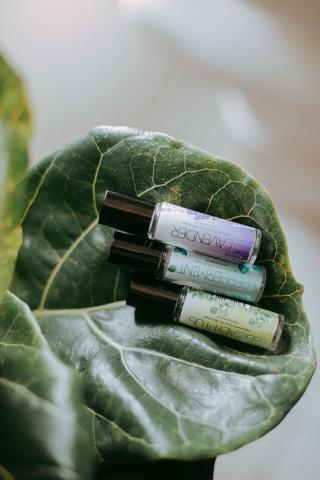
Essential oils (EOs) have become extremely popular in the last decade. They are commonly used in aromatizers or applied topically on the skin for a variety of health concerns. But what about taken internally - is this safe? And what role might EOs play in cancer care?
WHAT ARE THEY: Essential oils are oils taken from natural substances like plants (e.g. lavender and frankincense) that have been purified by a process called “distillation”. The result is an oil that smells similar to that of the natural substance. EOs are also used in soaps, perfumes, cosmetics, and household cleaning products.
HOW: EOs can be utilized through four different routes: inhalation, orally, topically and internally. Some examples are through aromatizers, applied topically with or without dilution, in honey, capsules or gargles. Dilution means EOs are combined with a carrier oil such as jojoba, sweet almond, olive or coconut oil.
SAFETY: EOs can be used safely on the skin with a carrier oil and some, such as cinnamon and oregano, can be applied directly to the skin without causing any irritation. Avoid applying EOs in an area where medication is also applied or injected, as this may increase the medication’s absorption. In people undergoing cancer treatment, try the patch test first to see how your skin might react to a particular oil, before applying to a larger area.
Internal use is another story – essential oils can be damaging to the liver if large doses are taken internally. Before ingesting any essential oils, consult a health-care provider who is trained in their use. EOs are highly controversial in the first trimester of pregnancy and are best avoided.
USE IN CANCER CARE: Research on the use of essential oils in cancer care is limited, however there has been positive outcomes in preliminary research on EOs and cancer-related fatigue, nausea, sleep and anxiety. Frankincense (Boswellia carterii) has a large number of cell studies, animal and human studies. In one case, topical frankincense was successfully used to manage a patient’s cancer-related fatigue. Cell studies suggest it works on the AMPK/mTOR pathway. See the chart below for a brief summary of potential uses and cautions of common essential oils. Note that topically or inhaled remains the safest route of administration.
Essential OilUsesCaution
LavenderSedative effect helps you feel calm
Supports immune function
Promotes sleepToo much lavender can cause a stimulating effect. It should be used with caution in people who are on medication for anxiety or depression.
PeppermintDecreases nausea (antiemetic)
Decreases vomiting High concentrations should not be applied to children’s (<30 months) throat or neck
OrangeLessens anxiety
Reduces nausea Phototoxic – if applied topically, exposure to UV light should be avoided
FrankincenseCancer-related fatigueMay interact with medications, including NSAIDs. Possibility of causing nausea, acid reflux, diarrhea or skin rashes.
Disclaimer: Please note that this blog posting is not meant to substitute medical advice from a health-care practitioner. The use of essential oils taken internally can be toxic. We recommend receiving professional advice prior to purchasing or using essential oils and speak with your health-care provider beforehand, especially if you are on any medication.
Author: Erica Rizzolo, CCNM ICC Naturopathic intern
References:
Debra Reis, R. N., & Jones, T. (2017). Aromatherapy. Clinical Journal of Oncology Nursing, 21(1), 16.
Ishfaq, P. M., Shukla, A., Beraiya, S., Tripathi, S., & Mishra, S. K. (2018). Biochemical and Pharmacological Applications of Essential Oils in Human Health Especially in Cancer Prevention. Anti-Cancer Agents in Medicinal Chemistry (Formerly Current Medicinal Chemistry-Anti-Cancer Agents), 18(13), 1815-1827.
Ren, P., Ren, X., Cheng, L., & Xu, L. (2018). Frankincense, pine needle and geranium essential oils suppress tumor progression through the regulation of the AMPK/mTOR pathway in breast cancer. Oncology reports, 39(1), 129-137.